I’m a big admirer of Emily from Micro Four Nerds, so I decided to explore her website and YouTube channel to gain insights into her perspective on compact cameras. Emily has a strong preference for Panasonic, which is why it comes as no surprise that Panasonic takes center stage in her content. Notably, Panasonic boasts the smallest m4/3 cameras, specifically the GM1 and GM5 (where the GM5 has an EVF), although it’s important to mention that these models also come with a premium price tag.
Emily is well aware of the key distinction between Olympus and Panasonic cameras: while Olympus cameras universally offer image stabilization, not all Panasonic models do, and even when they do, it doesn’t match the quality of Olympus stabilization, as she personally discovered here. Consequently, neither the GM1 nor the GM5 provides image stabilization, which I perceive as a significant drawback. Nevertheless, for those who have an interest in Panasonic, I’ve compiled a short list of potential options here below.
GM1 – 204g. 99 x 55 x 30 mm – 16mp
GM5 – 211g. 99 x 60 x 36 mm – 16mp and with EVF
GF3 – 264g. 108 x 67 x 32 mm – 12mp
GF7 & GF8 – 266g. 107 x 65 x 33 mm – 16mp
GX800/850 – 269g. 107 x 65 x 33 mm – 16mp
For Olympus I found a useful table on Andrzej Wrotniak’s website, which provides a comprehensive overview for comparing dimensions, weights, and certain specifications. This table streamlines the decision-making process, allowing you to make your choice quickly. If you wish to explore a particular camera in more detail or make comparisons with other models, you can visit the Camera Decision website.
My choices ultimately fell on the smallest Olympus Pen, the E-PM1, my most favorite, the E-PL6, and the most complete one I already had, the E-PL7.
As for the smallest E-PM1, I may still be a little unsure whether the E-PL3 could be a better choice, but, even with their limitations compared to the most extensive, they each have their own working area and advantages. It’s up to you to find out which one suits you best, or just buy them all 🙂
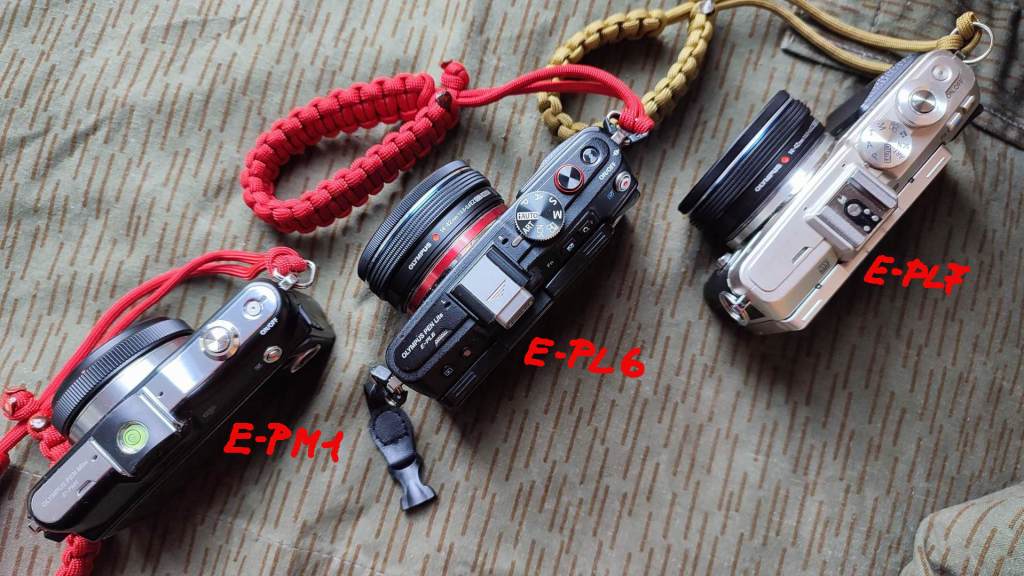
Olympus E-PM1 :
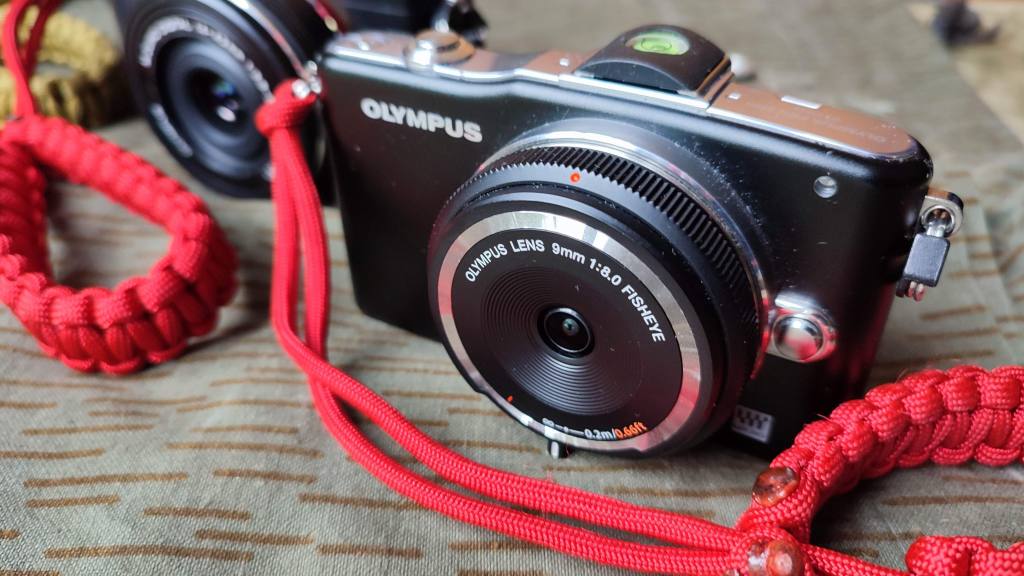
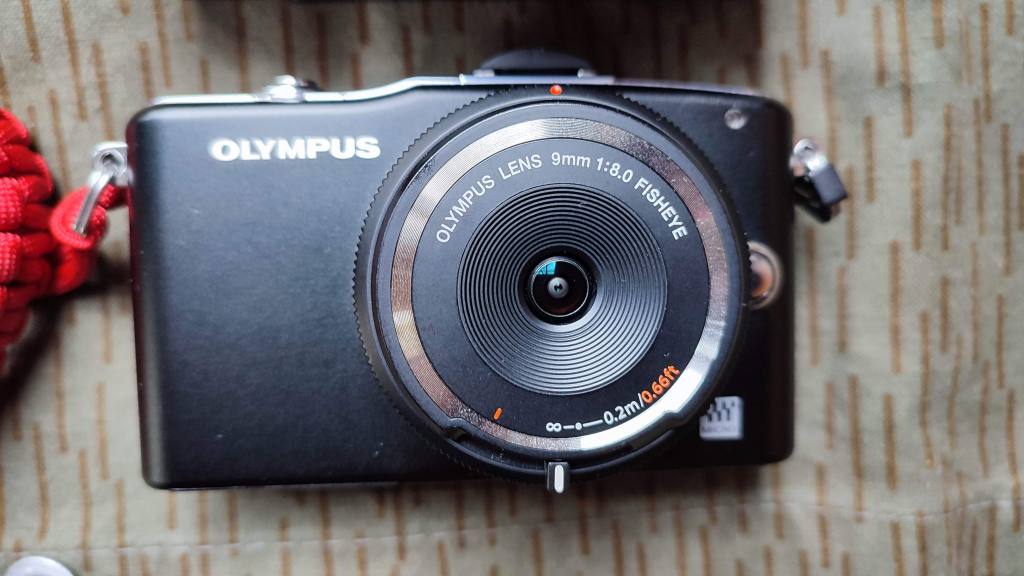
If you happen to consider the tiniest Olympus camera option, you’ll find yourself looking at the E-PM1, a camera I’ve owned previously and wasn’t particularly impressed with at the time. However, back then, the purpose for which I used it was different, as it served as a backup camera while I was accustomed to using DSLR cameras. Switching from an optical viewfinder (OVF) to an LCD screen was a bit too challenging for me back then.
The dimensions of the E-PM1 are 110 x 64 x 34 mm, and it weighs 265 grams with the battery included. It utilizes the BLS-5 battery, which can be swapped with the more recent BLS-50 used in the E-M10 series and E-M5 Mark III. You can still easily locate second-hand E-PM1 cameras on the market, with prices ranging from €50 to €200. I personally discovered a well-maintained one for €60, shipping included, on eBay.
When you pair the E-PM1 with the Olympus 9mm F8 Fish-Eye Body Cap Lens, you’ll instantly have the most compact camera and lens combination. It’s important to note that optimal lighting conditions are crucial when using this lenses together with the camera. Given its diminutive size, I’ve grown to appreciate it; however, it’s worth mentioning that this tiny camera lacks both PASM and a dedicated command dial, which can make manual adjustments for aperture and shutter speed somewhat challenging. My suggestion is : use the 9mm body cap lens and set it at “deep focus”, keep it in Program mode with Auto ISO up to 1600, shoot RAW and Jpg and use it as a convenient point-and-shoot camera.
If you want a little more options, PASM dial and flip screen, but don’t want to sacrifice too much in terms of size and weight, take a look at the 12mp E-PL3.
Olympus E-PL6 :
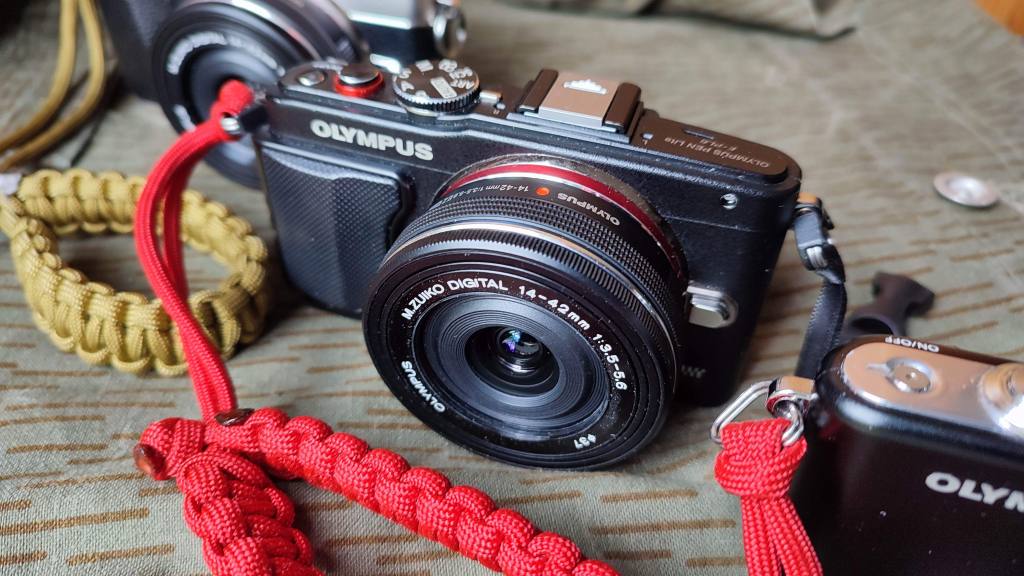
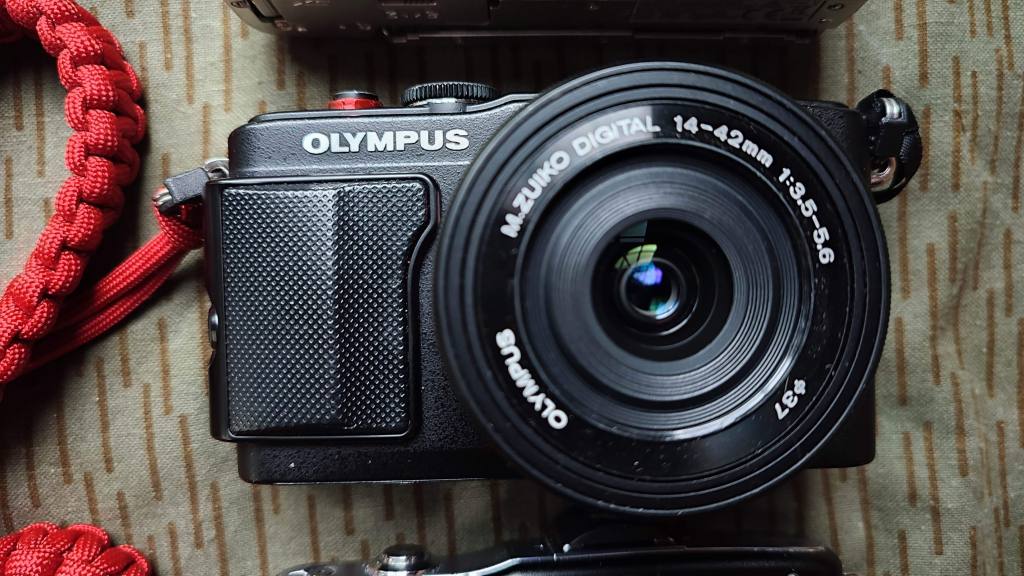
A substitute for the E-PM1, which also happens to be my favorite choice, is the Olympus E-PL6 with a 16MP sensor. The camera’s dimensions are 111 x 64 x 38 mm, and it weighs 325 grams, including the battery. It’s only slightly bulkier compared to the E-PM1, but it offers several advantages like a tiltable screen suitable for macro, or as a waist level viewfinder for street photography, selfies etc. Additionally, the E-PL6 comes with a detachable grip that can make the camera even more compact and lightweight if desired. This camera is readily available second-hand, with prices ranging from €100 to €250. Personally, I purchased a stunning black version for €150, which included two kit lenses.
The E-PL6 boasts 16mp, a PASM dial and Fn key, making it far better equipped than the E-PM1/E-PL3 and almost as user-friendly as a standard camera. Admittedly, it still lacks a command dial, which may take some adjustment, but the arrow pad control dial provides a somewhat comparable experience.
Even Emily is enchanted by the beauty of this little camera, and I’m a bit jealous of her, because she has a bright red one, and it’s gorgeous ! look here for her story about it. However, she doesn’t particularly like the standard Olympus menu system. It’s worth acknowledging that it might come across as complex to some, but as I see it, the complexity is a result of being more complete and having more features. On the flip side, this also implies that Panasonics are simpler, but truly simpler 🙂 . I apologize Emily, but critiquing this was like hitting an open goal; in reality, menus on unfamiliar cameras always seem intricate when compared to the one you’re accustomed to. It’s just a matter of time before you consider it completely normal, as all Olympus users do.
Olympus E-PL7
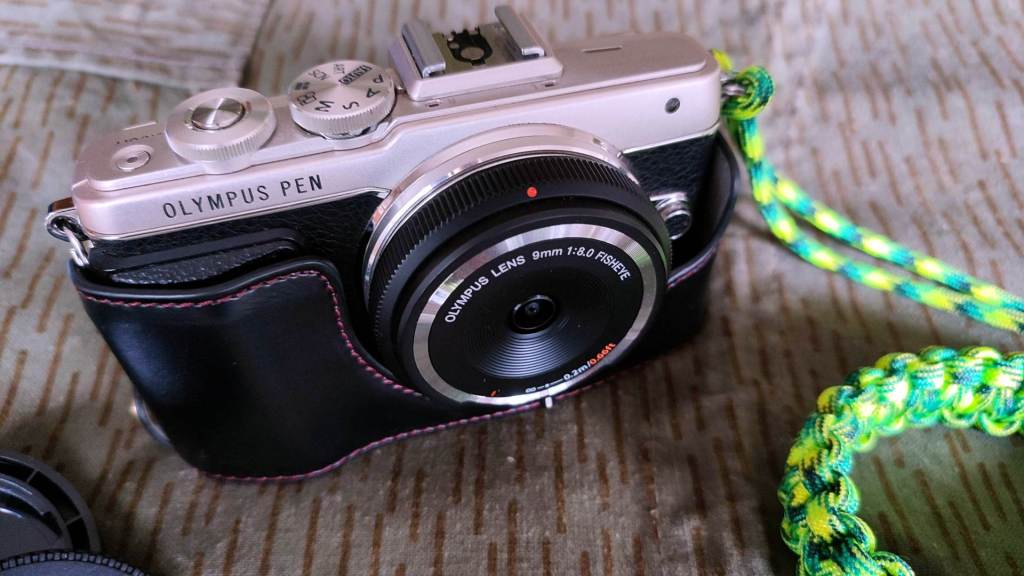
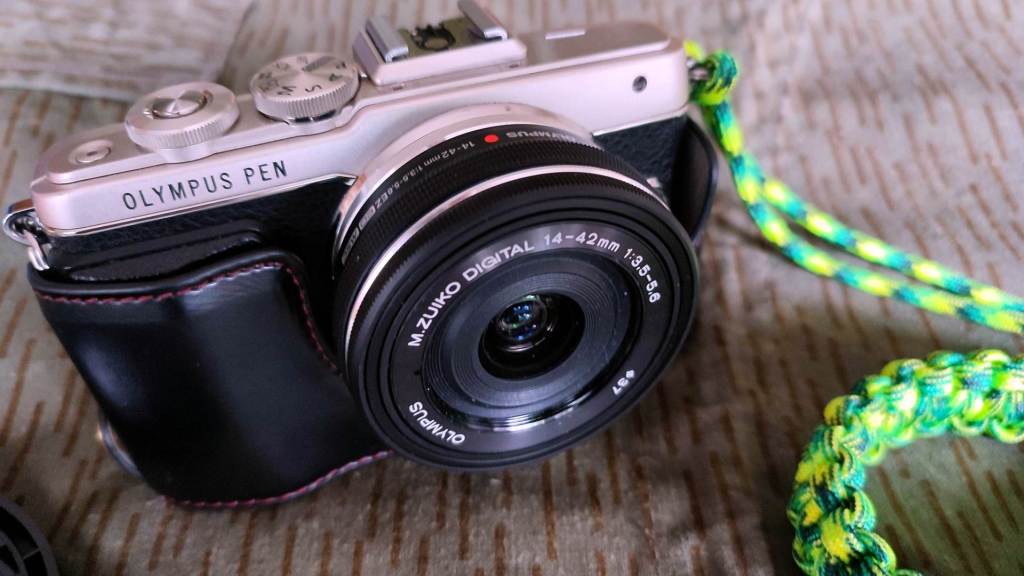
I’ve already covered this camera in part I of this article, so I’ll be concise now. It weighs 357g and has dimensions of 115 x 67 x 38 mm, making it only slightly larger and heavier than the E-PL6. However, it offers significantly more features. If you’re seeking top-notch performance in a compact design, the E-PL7 or its successor, the E-PL8 is your ideal choice.
Tiny Lenses :
To have a compact camera, it’s essential to pair it with small lenses. This led me on a quest to find lighter and more compact alternatives to the Olympus EZ 14-42mm pancake lens – Dimensions 63x23mm at 91gr.
The Panasonic 12-32mm f3.5-5.6 collapsible lens, dimensions 56x24mm at 70gr., is not only smaller in diameter, but also significantly lighter due to its manual mechanism compared to the 14-42mm lens. With a broader 12mm (24mm FOV) and a maximum focal length of 32mm (64mm FOV equivalent), it offers the versatility suitable for a standard lens. This lens should be your top choice if you aim to maximize your camera’s compactness and versatility. I bought it on eBay for €175 brand new.
At the same time, I also recommend taking the Panasonic 35-100mm f4-5.6, with a FOV of 70-200mm this is a lens that every photographer should have. With its L50x56mm and 135gr, it is a lens that you put away and forget you have it, it is so small and light. Together with the 12-32mm above you have the most compact possible kit with you, that can even fit together in one jacket pocket.
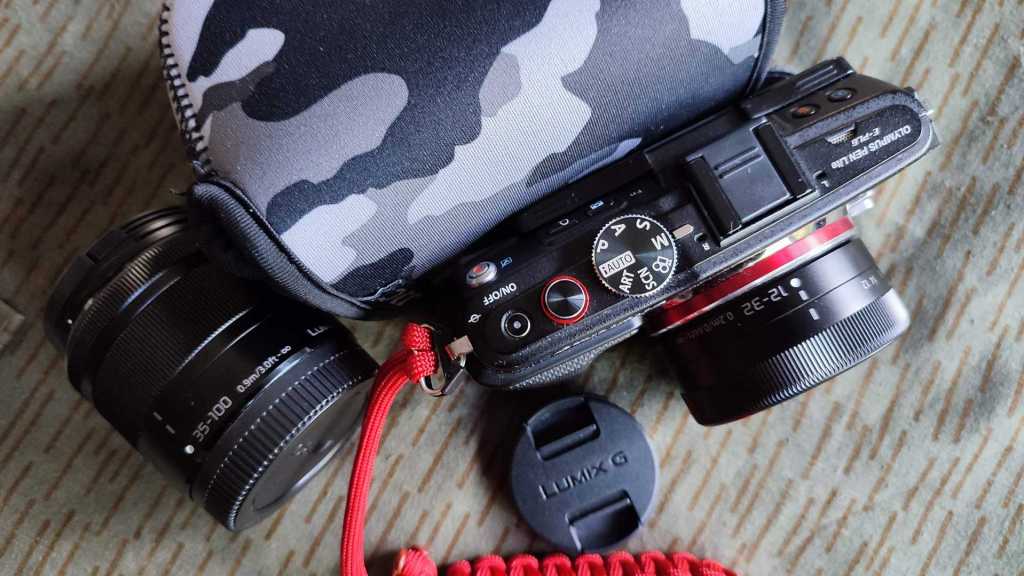
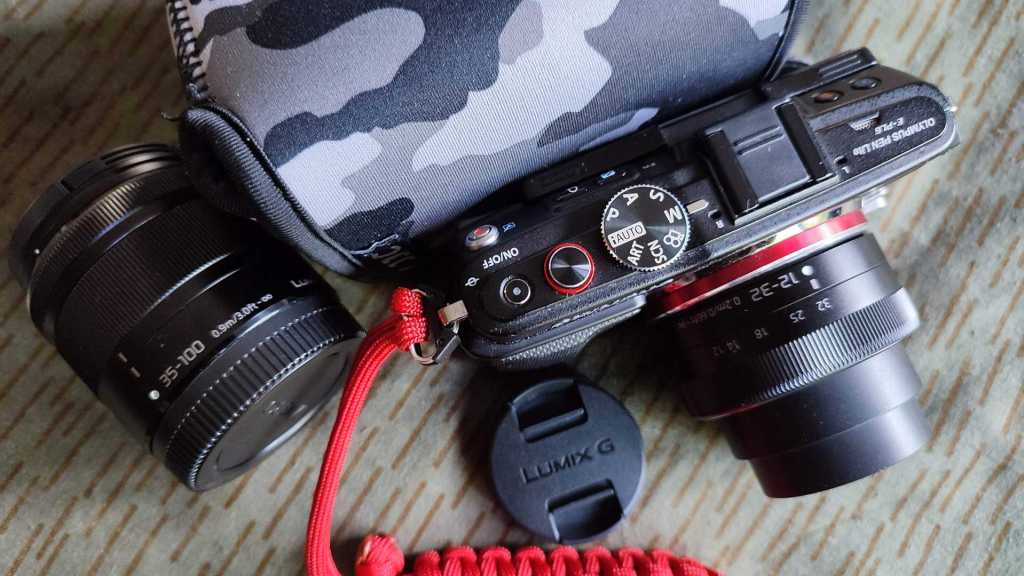
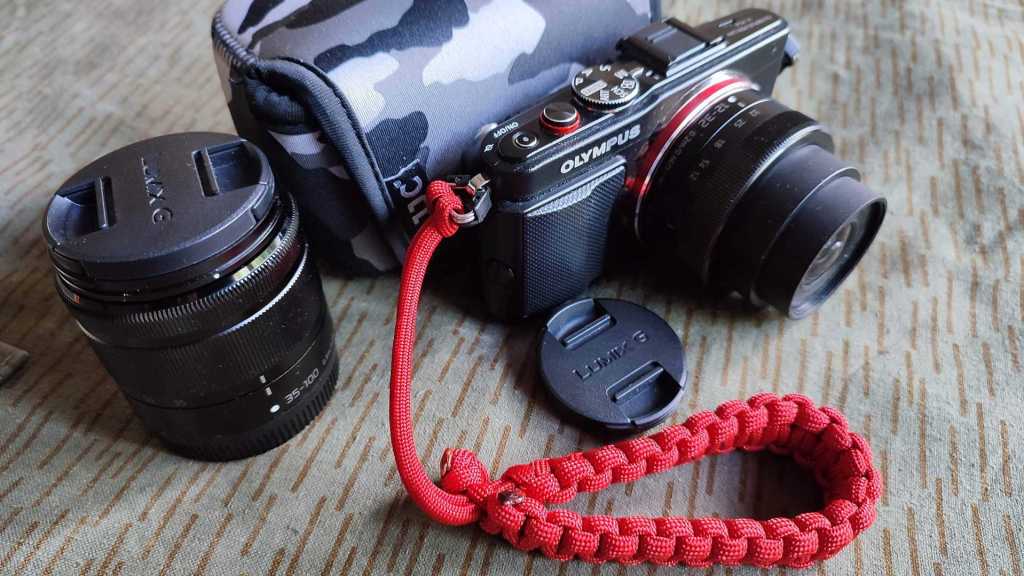
The Olympus 9mm F8 Fisheye Body Cap Lens is undoubtedly the second lens to consider. With its slim 12.8mm profile and 30g. featherweight, it transforms your tiny camera into something akin to a compact camera. When attached to the E-PM1, this combination almost matches the compactness of my Olympus TG series camera, making it truly pocket-friendly. The 9mm focal length, providing an 18mm field of view, is perfect for casual walkaround and street photography. When set to deep focus* it ensures sharpness from 0.5m to infinity. The only minor drawback I’ve noticed is that the focus adjustment lever can be a bit too sensitive, potentially causing unintentional focus shifts. I found this lens for €60 on a second hand site.
* deep focus = the second position on the lens (the point between infinity and 0.3m), this way its sharp from approximately 1m – infinity.
The lens that takes thickness one step further is the 7Artisans 18mm f6.3 Mark II, the successor to the so-called UFO lens, which was really ugly. This lens measures L 10x56mm and weighs 48g without the rear cap. The field of view (FOV) is equivalent to 36mm, which may make this lens more attractive than a 9mm Fish Eye at times. It features a rotating focus ring, making focusing more accurate, and it can focus as close as 30cm ! While focusing may be easier with the rotating ring, it doesn’t necessarily mean it’s more precise, so don’t expect razor-sharp shots. In summary : it’s a nice lens with acceptable sharpness for landscapes and architecture, but don’t crop or zoom in on your computer. However, the ultimate benefit is that with this lens, your camera becomes as pocketable as possible ! It costs around €70, including a plastic case, lens pouch, and lens cloth. Find Rob Trek‘s review about this lens here : https://www.youtube.com/watch?v=-OUXZCAlnuI
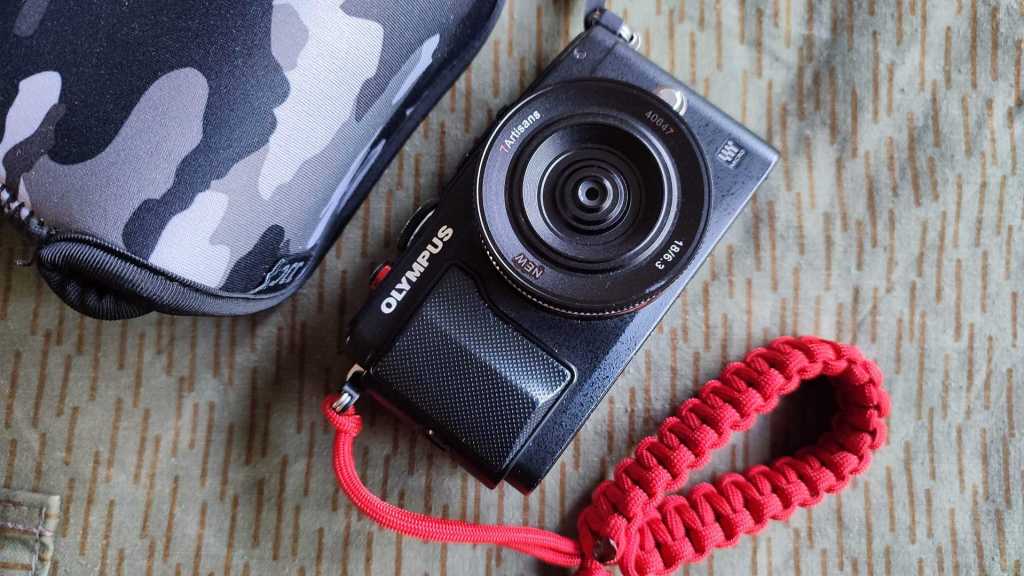
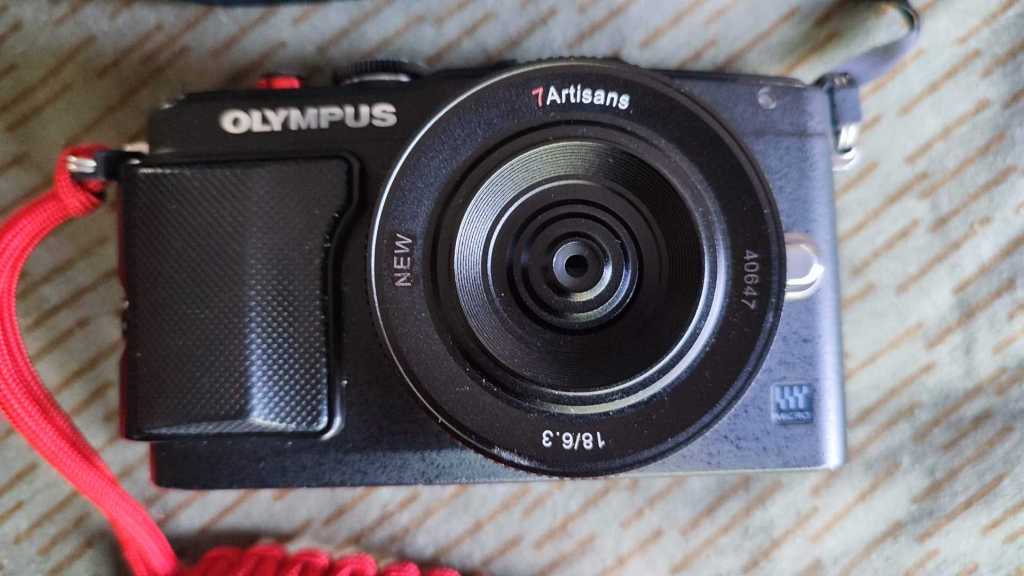
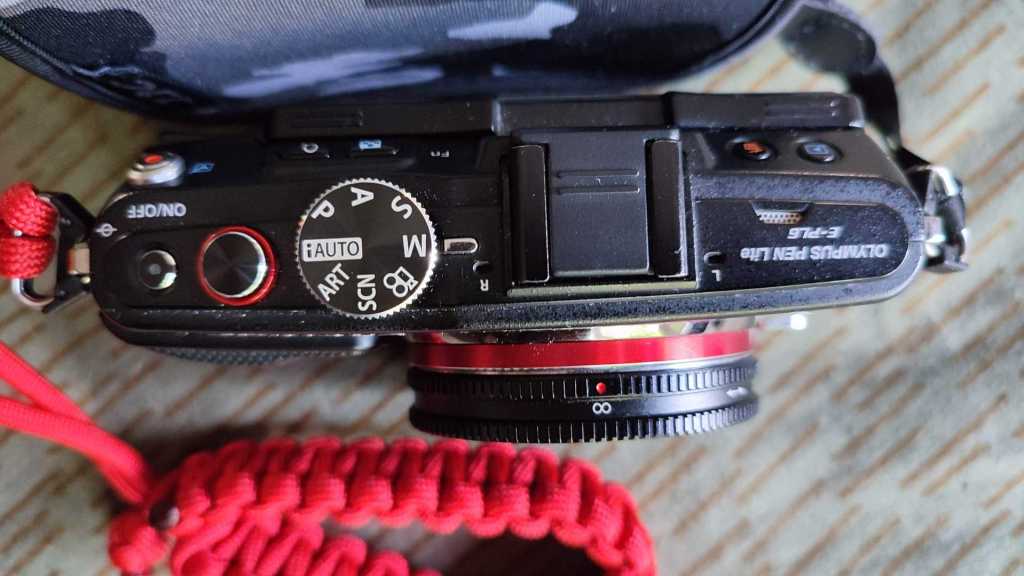
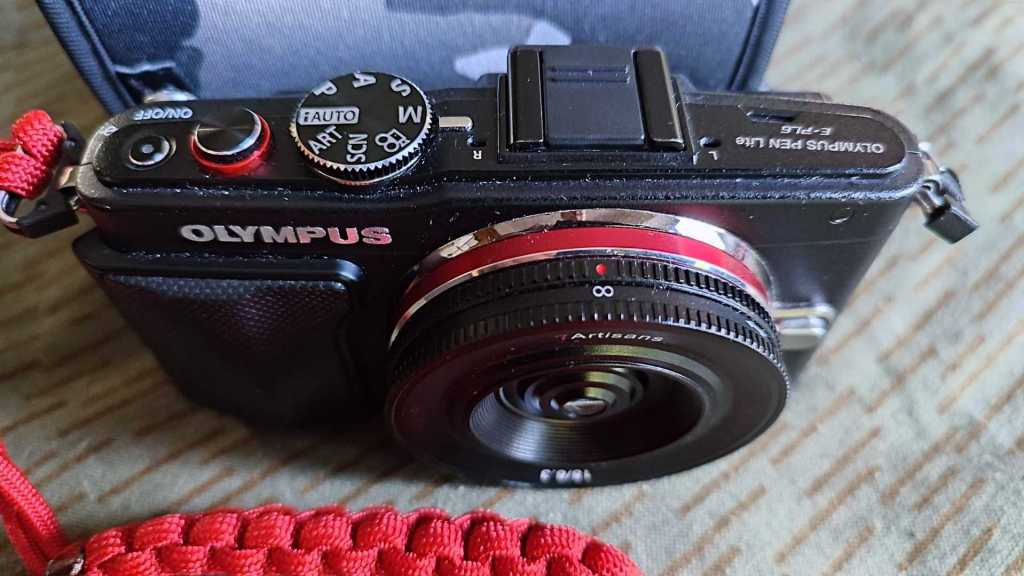
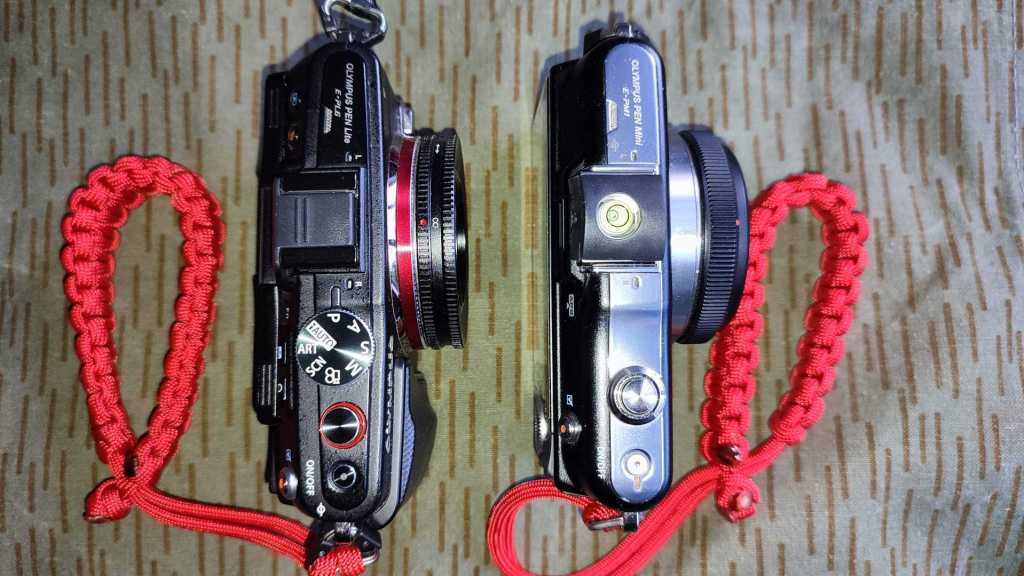
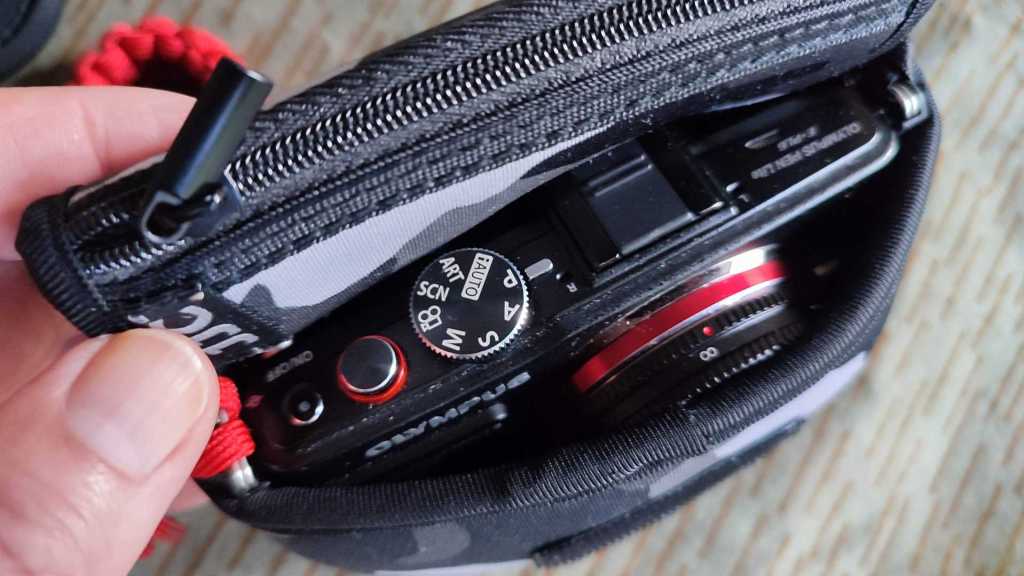
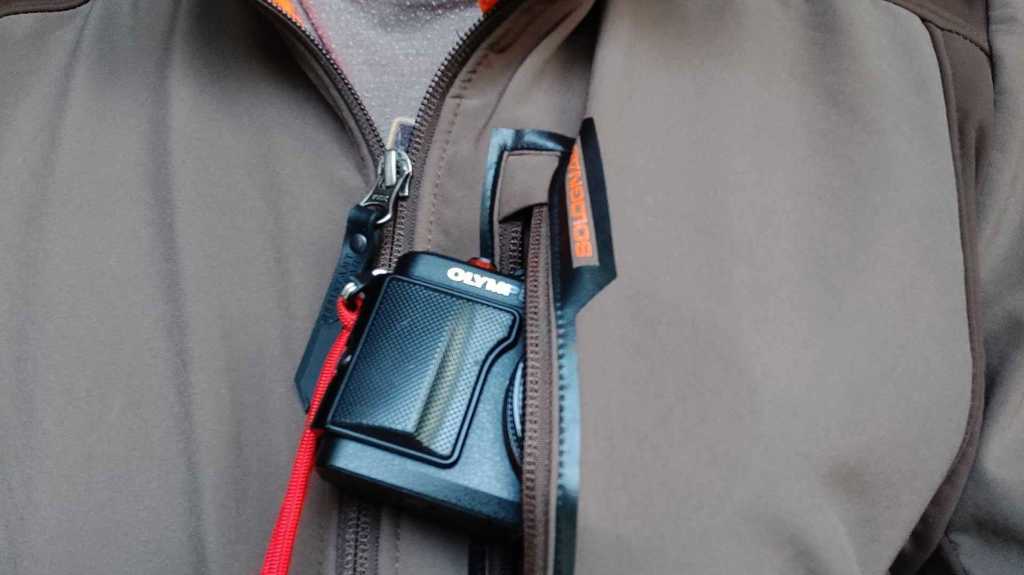
The Change :
So, here is where the story takes a little detour. Instead of bombarding you with more options for tiny lenses (and yes, I have those), let me share a moment that happened before and during this “Tiny Camera” project. I decided to add another camera to the mix, the E-PL9. Now, what’s so special about that, you may wonder ? Well, the E-PL9 and also the E-PL10 and E-P7 for that matter, mark a significant update in the PEN saga. The port for the potential EVF is completely gone, and the camera itself is again larger—definitely not tiny anymore !
This all started before my Bushcraft adventure in early October, where I had the E-PL6 as my main camera. Most professional and other reviewers criticize the removal of the EVF port on the E-PL9, E-PL10 and the E-P7 as a major mistake. However, I believe these reviewers are missing the point, but I’ll delve into that in a mini-review about the E-PL9, the reason behind removing the EVF port and why I bought this bigger camera. Coming very soon !
As for the lenses, I had not reached the end of my rope, there are still small lenses available such as the Panasonic pancake 14mm f2.5, the Olympus 17mm f2.8, etc., but all those lenses have already been reviewed a lot.
My view on the E-PL series had also changed so much that I was not only looking for tiny lenses, but rather more Creative lenses, many cheap and some more expensive ones.
I will review each one separately, below is an overview of those I already have and have tested or am working on:
- The Risespray/Pixco 8mm F3.8 Fish-Eye
- The Risespray 25mm F1.8 CCTV lens
- The Risespray 35mm F1.6 Gen. 5 in the color RED
- The Kamlan 15mm F2.0
- The Brightin Star 10mm F5.6 Fish-Eye
- The TTArtisan 25mm F2
- The Zhong Yi, Mitakon Creator 28mm f5.6 Leica M mount
- The 1946 bellows camera Kershaw Eight-20 Penguin, 100mm f11 lens – with 3D printed M42 mount
- The ’50 Kodak Retinette – Schneider-Kreuznach Reomar 45mm f2.8 – 3D printed M39 mount
- The ’50 Voigtlander Vito – Voigtländer Color-Skopar, 50mm f3.5 – 3D printed M42 mount
- The ’50 Welta Penti – Meyer Optik Domiplan 30mm f3.5 – 3D printed M39 mount
- And to end this list (for now) the Pixco-Venes M42-M4/3 Focal Reducer Speed Booster
Eleven lenses and 1 adapter, but after today the review of the E-PL9 will come first and then everything will become clearer about these EVF less cameras, and upcoming reviews of the lenses.
Concerning the term “Pocketable”:
Determining if a camera can easily fit in your pocket boils down to your own point of view. This is heavily influenced by what you’re wearing and how comfortable you feel. Even really small cameras, such as the E-PM1, might not feel like a handy pocket choice in certain situations and with specific clothes. So, it’s important to think about these factors.
Practical Additions:
I’ve invested in neoprene protective pouches for my new cameras, the E-PM1, E-PL6 and 7. These bags are designed to keep my cameras safe when I toss them loosely into any bag, ensuring that I don’t have to worry about loose keys or other items scratching my cameras. For the E-PM1 and E-PL6, I use the JJC pouch that I initially purchased for my TG-3 camera. It accommodates the camera with the 9mm or 18mm 7Artisans lens or simply as a body with the body cap attached. JJC’s specific order reference is JJC OC-R1YGR for the black/white camo version, but you can easily find it by searching online for “JJC for TG-6.” As for safe guarding the cameras along with the Oly 14-42mm or Pana 12-32mm lenses, I’ve opted for the JJC OC-S1YGR.
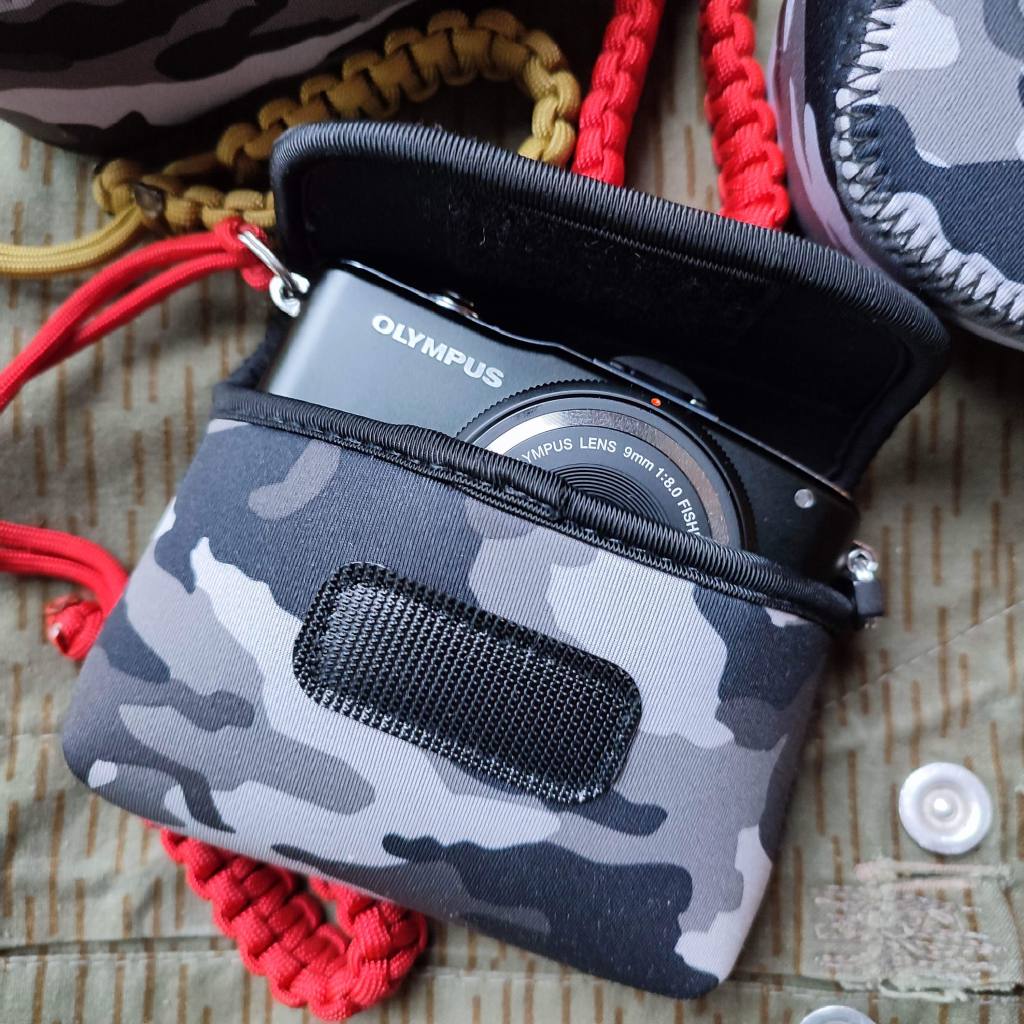
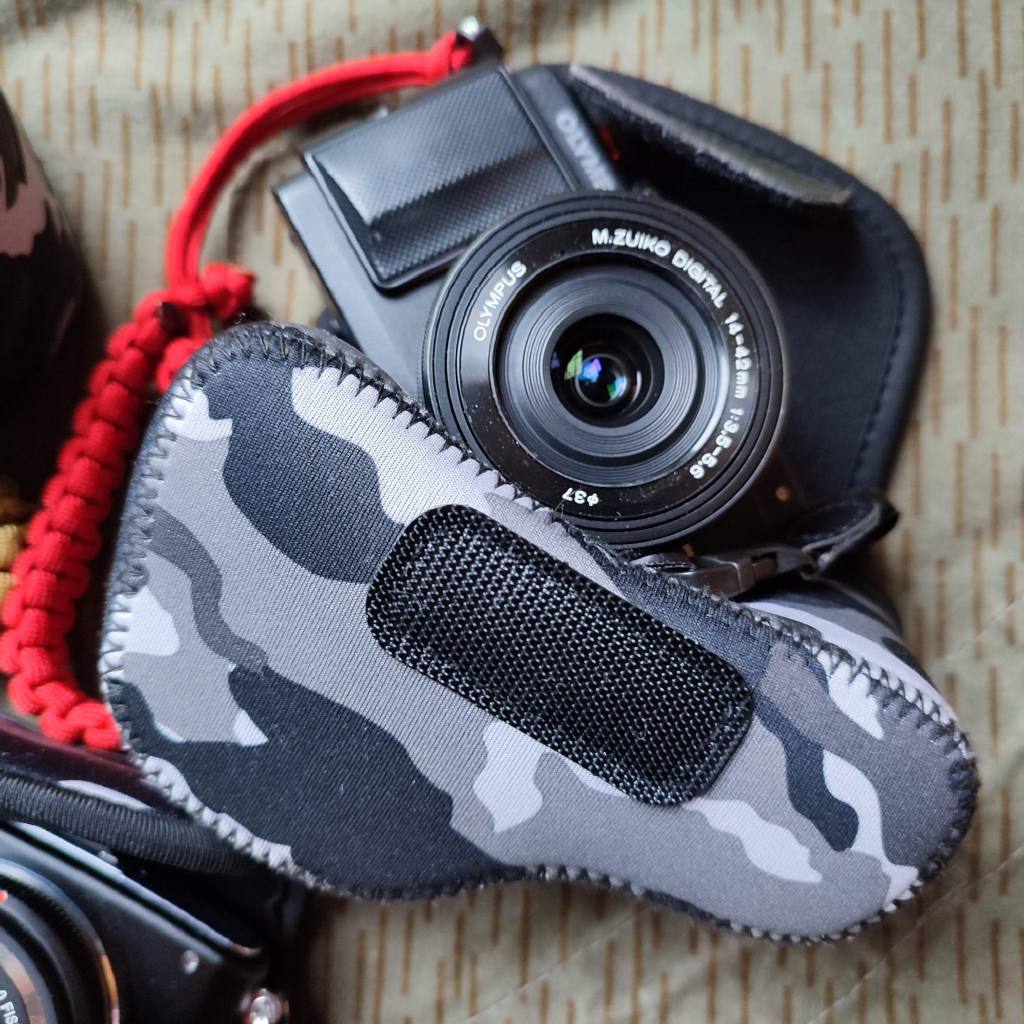
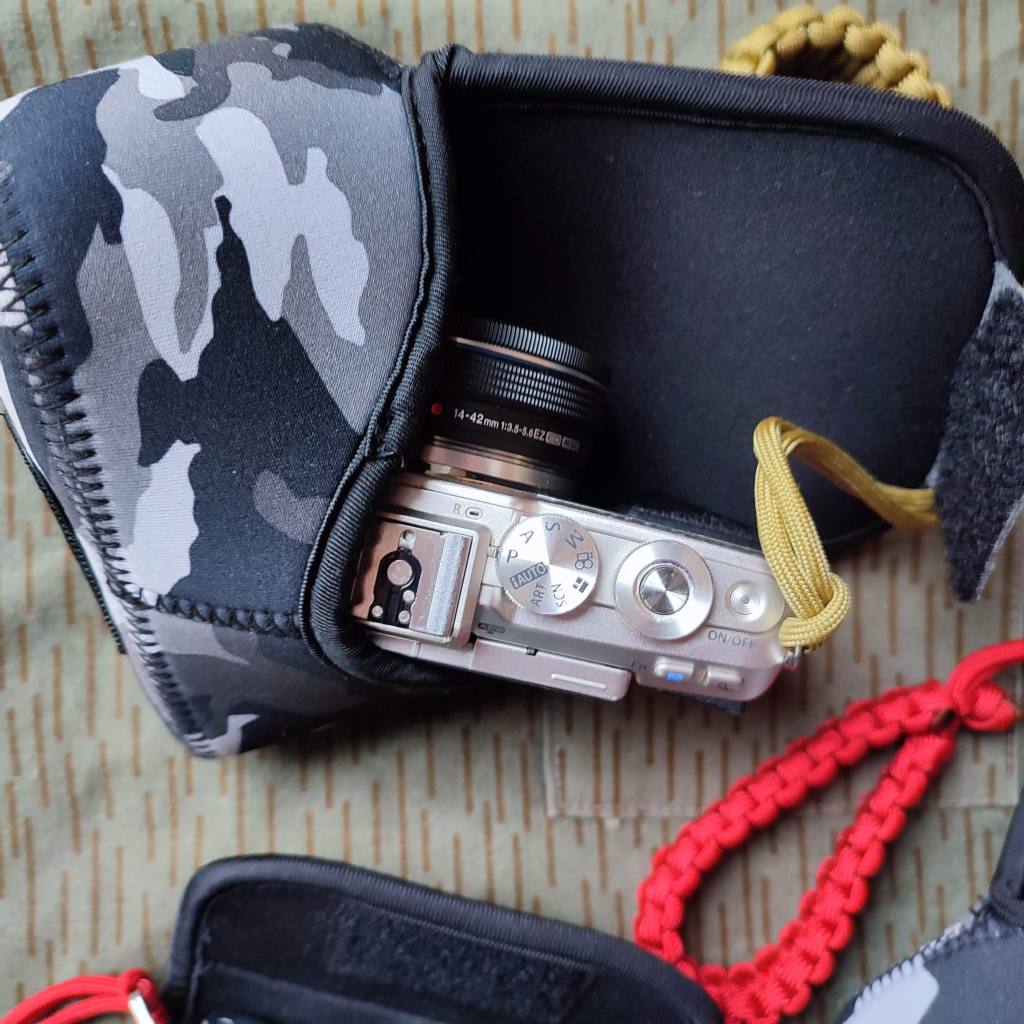
A wrist strap is always useful; it’s less obtrusive than a full neck strap and can also serve as additional protection for your camera and lens. It’s easy to make yourself using paracord if you follow my design, and it’s better than store-bought versions—customized and tailored to your size, plus 10 times cheaper. Stay tuned for a revamped and simpler design coming soon to OSP.
Neck straps have been on and off my cameras. Sometimes they just get in the way, or when you want to make your camera setup compact, they take up too much space. However, I must admit, occasionally a neck strap comes in handy. That’s why I’ve equipped mine with mini carabiners. This way, they can be quickly attached and removed. I also tried the quick-release system from Peak Design and others, however, if the strap isn’t attached, you’re still stuck with those long earrings rattling against your camera.
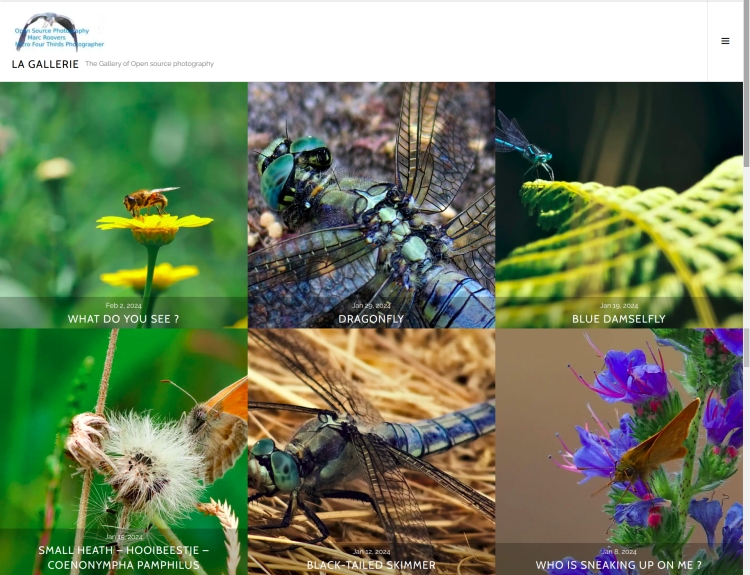
The photo gallery of Open Source Photography, Olympus micro 4/3 system, Vintage Lens Photograpy, Film Simulation, PictureFX, HDR – Photographer : Marc R.
Discover more from Open Source Photography
Subscribe to get the latest posts sent to your email.


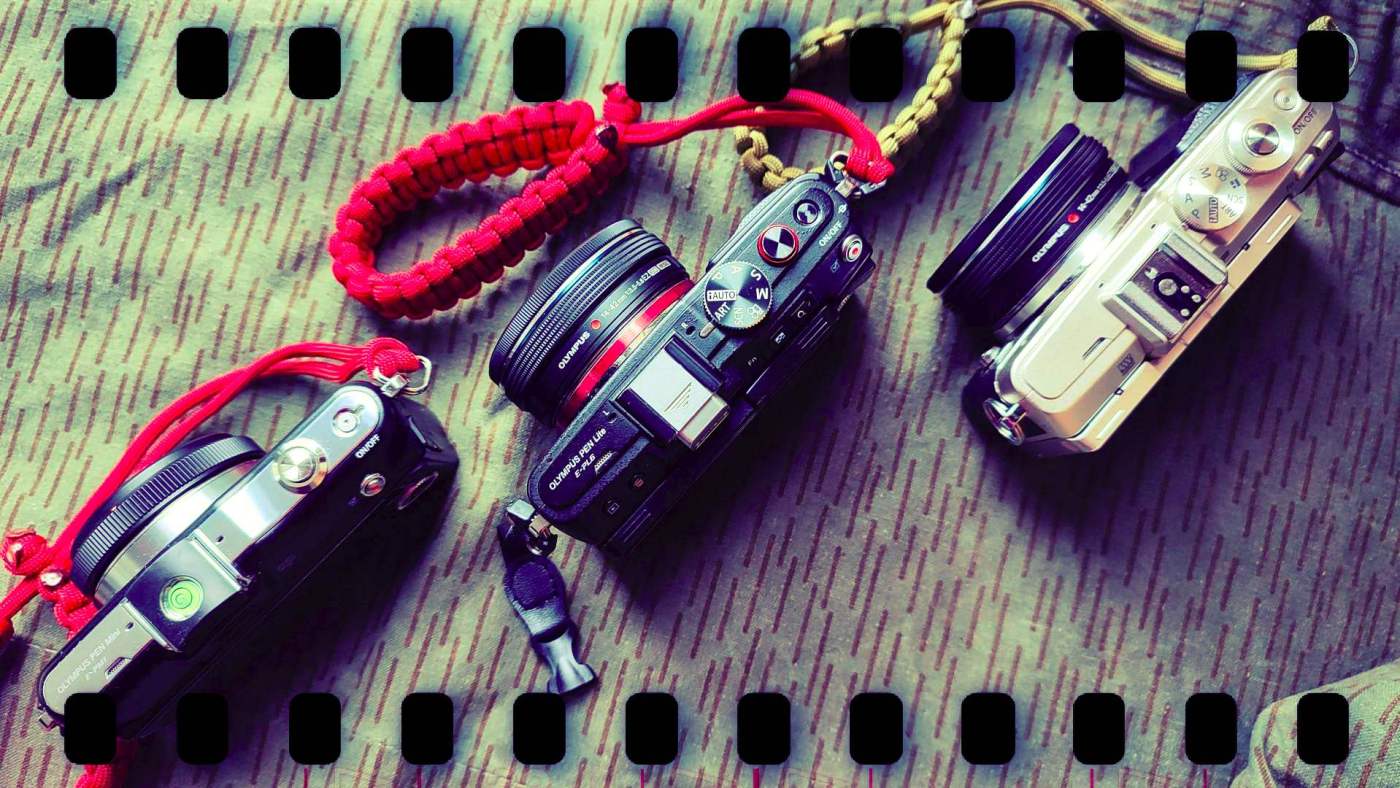

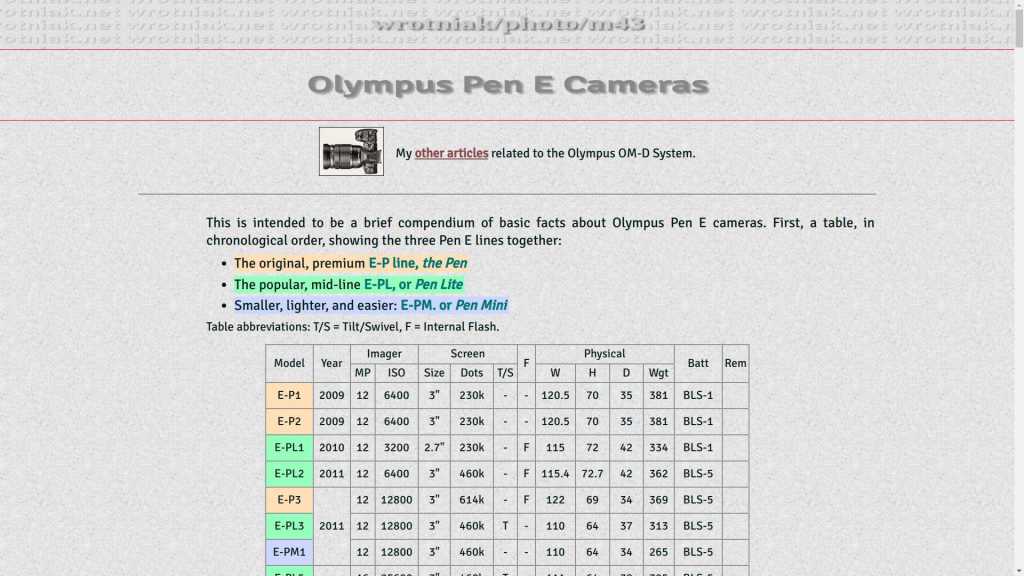
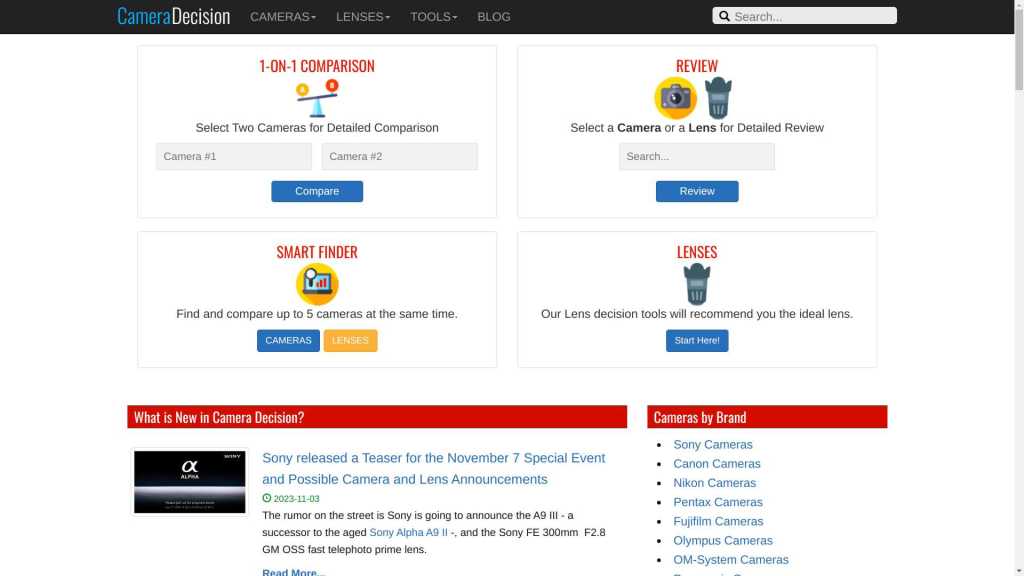

A perfect review and good solutions for travelers for who weight is important but want to make all kinds of quality photos. Thanks for sharing 🙂
LikeLiked by 1 person
Dankjewel Rudi, in het begin kan het raar zijn, fotograferen zonder viewfinder, maar waneer je de camera leert te aanvaarden zoals je smartphone camera, dan is dat nadeel plots geen nadeel meer. Bedankt voor je comment ! Fijne avond nog.
LikeLiked by 1 person
Appreciate all the info here. Since moving to MFT recently I can use all the resources around.
LikeLiked by 1 person
With pleasure Ted, I’m just glad it can help someone.
LikeLiked by 1 person
I have a Lumix 20mm lens. It focus not as fast as other lens but I like the size and sharpness of the lens. I used to pair it with my E-PM1 until the E-PM1 kaput.
LikeLiked by 1 person
Hey Tongkm, the Lumix 14 & 20mm are indeed great choices as a small lens with very good results, too bad your camera broke.
All the best !
LikeLike
I miss my Oly Pen cameras. I am looking to possibly purchase one of them in the not too distant future.
LikeLiked by 1 person
Thanks, Victor! You can’t go wrong with it. They are small and beautiful, and they hold their value. Regards, Marc.
LikeLike